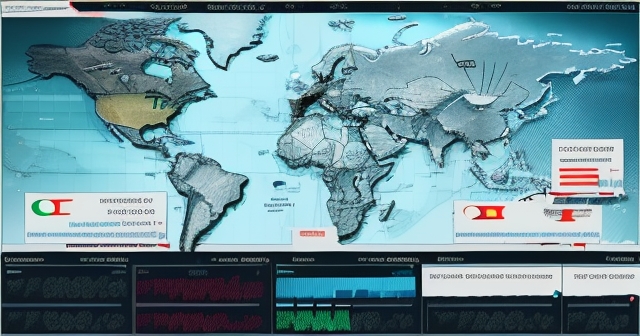
USD TRY Exchange Rate: Understanding Recent Trends and Future Predictions
“`html
Table of Contents
ToggleUnderstanding the Dynamics of the USD/TRY Exchange Rate
Welcome, aspiring traders and investors, to a deep dive into one of the most watched and intriguing currency pairs in the financial world: the USD/TRY. This pair, representing the exchange rate between the United States Dollar and the Turkish Lira, has a history marked by significant volatility and depreciation of the local currency. Understanding its movements is not just about tracking numbers; it’s about comprehending a complex interplay of global economics, local monetary policy, and geopolitical factors.

If you’re new to this space, you might wonder why one currency fluctuates so dramatically against another. Think of it like the relative strength of two individuals in a tug-of-war. The factors influencing each country’s economic health, stability, and central bank decisions are the forces pulling the rope. For the Turkish Lira against the US Dollar, these forces have often pulled strongly in one direction, leading to notable shifts over time.
In this exploration, we will dissect the current state of the USD/TRY, examine the key drivers behind its recent behaviour, including Turkey’s unique economic challenges and policy responses, look back at its historical trajectory, and consider what the future might hold based on expert forecasts. Our goal is to provide you with a clear, structured understanding, equipping you with the knowledge to approach this complex pair with greater confidence.
Key points related to USD/TRY exchange rate:
- Significant volatility shapes the exchange rate between USD and TRY.
- Global economic factors heavily influence currency movements.
- Understanding this pair requires knowledge of Turkey’s monetary policy.
| Event | Date | Impact on Rates |
|---|---|---|
| Interest Rate Decision | March 2024 | Rate hike expected |
| Inflation Data Release | May 2024 | Volatility likely |
Recent USD/TRY Movements: Finding Ground Around 32.2?
Let’s start by grounding ourselves in the present. As market participants, our first point of reference is often the current trading price. The USD/TRY exchange rate is constantly moving, reflecting the latest supply and demand dynamics shaped by news, data releases, and sentiment. We’ve observed that the Lira has recently demonstrated a degree of stability against the Dollar, largely hovering around the 32.2 level since late March. This period follows significant movements earlier in the year and represents a phase where markets are digesting new information and assessing the impact of policy.
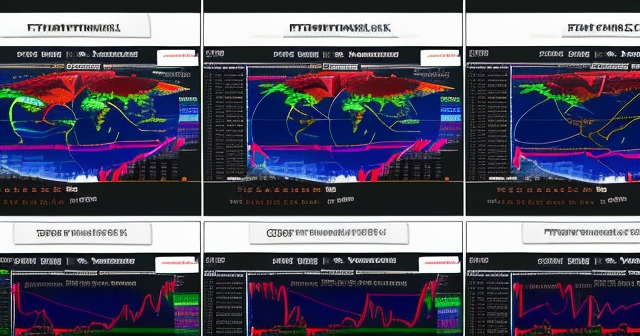
While we note this general stability since late March, it’s crucial to understand that “stability” in volatile pairs like USD/TRY is relative. Even within this range, there are minor daily fluctuations. For instance, recent data points show slight dips (e.g., a decrease on June 18th), which are typical intraday or short-term movements. These smaller waves occur within the broader trend or range, much like ripples on the surface of a deep ocean.
This period of relative calm around the 32.2 mark is significant because it suggests that, at least temporarily, the market may be finding a short-term equilibrium point. However, as we will explore, this equilibrium is set against a backdrop of substantial economic challenges and ongoing policy efforts, meaning this level is more a temporary pause than a signal that underlying pressures have vanished.
Real-Time Quotes: Why Do Numbers Vary Across Platforms?
As you begin to track the USD/TRY, you might notice something confusing: different financial platforms often show slightly different real-time quotes. For example, you might see figures like 32.8203 on one major economics portal, 36.2193 on a prominent business news site, 32.6350 as a previous close on another, and a bid/ask spread like 32.6076 / 32.6139 elsewhere – all purportedly for the same moment in time or recent history.
Why does this happen? It’s a critical point for any trader or analyst to understand. Here are a few key reasons:
-
Data Sources: Different platforms pull data from different feeds, exchanges, or liquidity providers. The price you see is often the most recent trade price or the best available bid/ask quote from *that specific source’s* aggregated feed.
-
Last Trade vs. Bid/Ask: Some platforms show the price of the very last executed trade, which might have occurred a moment ago. Others show the current ‘Bid’ (the highest price a buyer is willing to pay) and ‘Ask’ (the lowest price a seller is willing to accept). The ‘mid-price’ (average of bid and ask) is sometimes displayed as a single quote.
-
Real-Time vs. Delayed: While many platforms offer real-time data, some consumer-facing sites may have a slight delay (e.g., 10-15 minutes), especially for certain instruments or exchanges. This delay can cause quotes to appear stale.
-
Specific Markets: Exchange rates can technically vary slightly across different markets or trading venues due to minor differences in supply, demand, and liquidity at that specific location or platform.
-
Type of Price: Are you seeing an ‘spot’ rate, a futures price, or a rate from a specific type of over-the-counter (OTC) market? While spot prices are generally very close, slight variations can exist.
For serious trading and analysis, always rely on reputable platforms that provide real-time bid and ask prices. Understand their data source and whether the feed is truly live. The discrepancies you see are normal but highlight the importance of using reliable data for executing trades or performing analysis.
Turkey’s Fight Against Inflation: The 75.45% Challenge
The single most significant factor currently dominating discussions around the Turkish economy and, consequently, the Turkish Lira, is inflation. We’ve seen staggering figures, with annual inflation in Turkey soaring to 75.45% in May. This number is not just a statistic; it represents a significant erosion of purchasing power for individuals and businesses within Turkey.
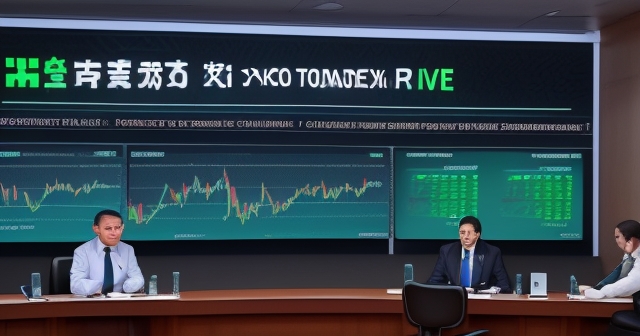
Think of high inflation like a persistent leak in a bucket. The value of the money (the water in the bucket) is constantly diminishing, even as you try to fill it. For a currency’s exchange rate, high domestic inflation makes its goods and services relatively more expensive internationally over time, while foreign goods become cheaper domestically. This dynamic typically puts depreciation pressure on the currency.
The scale of this challenge is underscored by the Turkish Central Bank’s revised year-end inflation forecasts, which were raised to 38% from 36% previously. While a forecast of 38% by year-end implies a significant slowdown from the 75% peak, it still represents an extremely high level of inflation compared to global norms. This stubborn inflationary environment makes managing the economy and stabilizing the currency incredibly difficult.
For traders and analysts, inflation data releases are critical events. High or rising inflation often signals the need for tighter monetary policy, but it also highlights underlying economic imbalances that can weaken a currency. The 75.45% figure is a stark reminder of the intense economic headwinds the Turkish economy is facing.
The Turkish Central Bank’s Monetary Policy Tightrope Walk
In response to the persistent and high inflation, the Turkish Central Bank has been actively engaged in monetary policy tightening. Their primary tool has been the interest rate. In a significant move towards orthodox economic policy after previous unconventional approaches, the Central Bank aggressively hiked rates earlier, and in May, they maintained their benchmark interest rate at a high 50%.
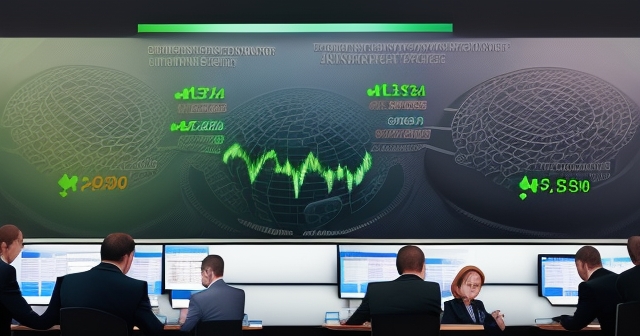
Why such high interest rates? The classical economic theory dictates that high rates help cool down an overheating economy by making borrowing more expensive. This reduces consumer spending and business investment, thereby dampening overall demand. Lower demand, in turn, should theoretically help reduce price pressures and bring down inflation. Think of the Central Bank as trying to put the brakes on a fast-moving vehicle (the economy) to bring the speed (inflation) down to a manageable level.
The Central Bank has stated that it will maintain this tight monetary stance until a significant and sustained drop in inflation is observed. Furthermore, they’ve signalled the possibility of further tightening if inflation deteriorates significantly and persistently. This forward guidance is crucial for markets, as it indicates the bank’s resolve and sets expectations for future policy decisions.
They also anticipate that the effects of this tight monetary policy will have a lagged effect, meaning the full impact won’t be felt immediately. The Central Bank expects the policy’s effects on easing demand and curbing inflation to become more evident primarily in the second half of the year. This time lag is important to consider when evaluating the effectiveness of current policies; results take time to materialise.
The Central Bank’s challenge is a delicate tightrope walk: hike rates too aggressively, and they risk triggering a sharp economic slowdown; don’t hike enough or signal resolve clearly, and inflation could remain entrenched, further damaging the Lira’s value and economic stability.
Beyond Inflation: Key Turkish Economic Indicators to Monitor
While inflation and monetary policy are currently front and centre, a comprehensive understanding of the USD/TRY pair requires looking at the broader economic landscape of Turkey. Several other economic indicators provide crucial context and can influence currency performance. Monitoring these helps build a more complete picture of the economy’s health and direction.

Here are some of the key indicators mentioned that you should pay attention to:
-
Retail Sales Growth: Reflects consumer spending, a key component of economic activity.
-
Current Account Balance: Measures the flow of goods, services, and investments between Turkey and the rest of the world. A deficit (more money flowing out than in) can put pressure on the currency.
-
Jobless Rate: Indicates the health of the labour market. High unemployment can signal a weak economy.
-
Industrial Output: Measures the volume of production in manufacturing, mining, and utilities – a proxy for economic growth.
-
Trade Deficit: Part of the current account, specifically focusing on the balance of imports vs. exports. A large deficit means Turkey is importing more than it’s exporting, requiring foreign currency and potentially weakening the Lira.
-
Manufacturing PMI (Purchasing Managers’ Index): A survey-based indicator reflecting the health of the manufacturing sector. Readings above 50 typically indicate expansion.
-
Producer Prices: Measures inflation at the wholesale level, often seen as a leading indicator for consumer inflation.
-
GDP Growth: The broadest measure of the economy’s overall health and expansion or contraction.
-
Economic Morale Index: A sentiment indicator reflecting confidence among consumers and businesses.
| Indicator | Current Status | Impact |
|---|---|---|
| Retail Sales Growth | Stable | Positive |
| Jobless Rate | High | Negative |
Collectively, these indicators paint a picture of Turkey’s economic strength, potential for growth, and external balances. Positive trends in areas like export growth, industrial output, or improving current account balance can provide fundamental support for the Lira, while negative trends exacerbate existing pressures. Understanding these is crucial for a well-rounded analysis of the USD/TRY.
Boosting Confidence: The Role of Growing Foreign Exchange Reserves
Amidst the challenges of inflation and currency depreciation, one positive development for the Turkish Lira has been the recent trend in foreign exchange reserves. Data indicates that Turkey’s foreign exchange reserves have been increasing, reaching $78.5 billion in late May.
Why are foreign exchange reserves important for a currency’s stability? Think of reserves as a country’s savings account in foreign currencies (like USD, EUR, etc.) and gold. A healthy level of reserves provides a buffer against external economic shocks. It signals to the market that the central bank has resources it *could* potentially use to defend the currency during periods of sharp decline, although the decision to intervene is a separate policy choice.
Growing reserves can boost market confidence in the central bank’s ability to manage the economy and support the currency. It can also improve the country’s creditworthiness in the eyes of international investors. For the Turkish Lira, increasing reserves are seen as a welcome sign, potentially offering some underlying support and contrasting with periods when reserves were depleted.
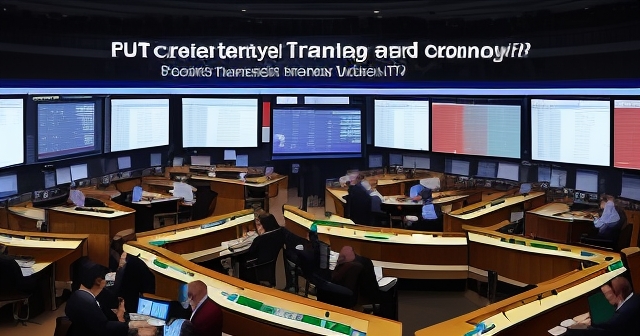
However, it’s also important to consider how these reserves are accumulated (e.g., through borrowing, attracting foreign investment, or specific central bank actions) and their composition and net value. While the headline number of rising reserves is positive, the sustainability and context of this growth are also factors that sophisticated analysts will consider when assessing its impact on the USD/TRY outlook.
The Weight of History: Long-Term Lira Depreciation and All-Time Highs
To truly grasp the significance of the current situation, we must look at the historical performance of the Turkish Lira against the US Dollar. The story here is one of substantial, long-term depreciation for the Lira. The numbers are quite telling:
-
Over the past 5 years, the USD/TRY pair has shown a return of approximately 483.42% (based on data like that from Yahoo Finance). This means that five years ago, one US Dollar would have bought roughly 5.6 Lira, whereas today it buys around 32. The Lira has lost nearly 83% of its value against the Dollar in this period.
-
Looking back further, the all-time return for USD/TRY is a staggering 2,326.19% (again, based on historical data services). This illustrates the dramatic devaluation of the Lira over decades.
This long-term trend of depreciation is a critical piece of context. It’s not just recent events; the Lira has faced structural economic challenges and policy choices over many years that have led to this weakening against stronger, more stable currencies like the US Dollar. This history creates a market expectation, and reversing such a trend is a monumental task.
Adding to this historical context, the USD/TRY pair recently reached a significant milestone: an all-time historical high of 33.81 in April 2024. While forecasts discussed below suggest limited *further* upside in the very near term, reaching a new peak underscores the ongoing pressure and the Lira’s vulnerability, despite recent periods of relative stability.
For traders, understanding this history is vital. It informs potential long-term trends, highlights risk, and provides perspective when analyzing current price levels. The past performance serves as a powerful reminder of the underlying economic forces at play.
Peering into the Future: USD/TRY Forecasts and Analyst Expectations
Given the volatility and the complex economic backdrop, where do experts see the USD/TRY heading? While no forecast is ever a guarantee, looking at projections from reputable sources can provide insight into market expectations based on current information and models.
According to models and analysts tracked by platforms like Trading Economics, the forecasts for the USD/TRY exchange rate suggest relatively limited movement from current levels in the near term, particularly when compared to the historical volatility:
-
The forecast is for the USD/TRY to trade at 32.47 by the end of the current quarter (presumably Q2 2024, ending June).
-
Looking further out, the projection is for the pair to trade at 33.13 in 12 months.
These forecasts, if they hold true, would indicate a significant stabilization compared to the sharp depreciations seen in previous years. They likely bake in expectations that the Central Bank’s tight monetary policy, coupled with efforts towards economic rebalancing, will have a moderating effect on the pace of Lira depreciation.
However, it is essential to treat forecasts with caution. They are based on specific assumptions about future economic data, policy decisions, and global conditions. Unexpected events – whether domestic (e.g., policy shifts, political developments) or global (e.g., changes in global risk sentiment, US Dollar strength) – can quickly cause actual outcomes to diverge significantly from predictions.
Traders use forecasts as one tool among many, cross-referencing them with their own technical and fundamental analysis to form a trading plan. These forecasts provide a baseline expectation, but the ability to adapt to changing circumstances is paramount.
Trading the USD/TRY: Navigating Volatility and Applying Analysis
For you, as an investor or trader looking at the USD/TRY pair, understanding the fundamental factors we’ve discussed is the first step. But how do you translate this knowledge into potential trading decisions? This is where the practical application of analysis comes into play, combining macroeconomic understanding with market dynamics.
Trading the USD/TRY means navigating a pair known for its volatility. While recent months have shown some stability, the historical trend and the ongoing economic challenges mean that sharp movements are always a possibility. This requires a careful approach to risk management, including setting appropriate stop-losses and managing position sizes relative to your capital.
Technical analysis plays a crucial role here. Traders use charts to identify trends, support and resistance levels, and patterns that might signal future price movements. For USD/TRY, observing how the price interacts with key levels (like the recent 32.2 area or the previous all-time high of 33.81) can provide potential trading signals. Combining technical analysis with the fundamental understanding of inflation, interest rates, and economic indicators offers a more robust analytical framework.
Choosing the right platform is also vital when trading volatile pairs and accessing diverse markets. You need reliable execution, competitive pricing (low spreads), access to charts and analysis tools, and robust security.
If you’re considering starting forex trading or exploring various Contract for Difference (CFD) instruments, a platform like Moneta Markets is worth considering. Based in Australia, it offers over 1000 financial instruments suitable for both beginner and professional traders. It supports mainstream platforms like MT4, MT5, and Pro Trader, combining high-speed execution with low spreads to provide a favourable trading experience. If you are looking for a regulated broker with global trading capabilities, Moneta Markets holds multiple international regulatory licenses, including FSCA, ASIC, and FSA, and offers comprehensive support features like segregated client funds, free VPS, and 24/7 Chinese customer service, making it a preferred choice for many traders.
Trading the USD/TRY requires diligence, continuous learning, and the ability to combine fundamental insights with technical strategies on a reliable trading infrastructure.
Conclusion: The Path Ahead for the Turkish Lira
Our journey through the USD/TRY landscape reveals a currency pair wrestling with significant economic forces. The Turkish Lira’s performance is intrinsically linked to Turkey’s battle against stubbornly high inflation, the crucial policy decisions of the Turkish Central Bank, and the broader success of the country’s economic rebalancing efforts.
While the Lira has shown relative stability against the US Dollar around the 32.2 level since late March, the backdrop of 75.45% annual inflation in May underscores the immense challenge ahead. The Central Bank’s commitment to a tight monetary policy, keeping interest rates at 50% and signalling readiness for further action if needed, is the primary tool aimed at cooling the economy and curbing inflation. We are now in a phase where markets are watching for the lagged effects of this policy to become visible in the second half of the year.
Supporting factors like growing foreign exchange reserves offer some positive signs, potentially boosting confidence. However, the long-term historical trend of significant Lira depreciation and the recent all-time high in April serve as powerful reminders of the underlying vulnerabilities and the scale of the task to achieve sustained stability.
Forecasts suggest a potential period of less dramatic depreciation in the near term compared to the past, but these predictions are contingent on successful policy execution and positive economic developments. For anyone involved with the USD/TRY, whether as an investor or a trader, continuous monitoring of key economic data, central bank communications, and geopolitical events is essential. The Lira’s trajectory will ultimately be determined by the effectiveness of current policies in taming inflation and restoring broader economic health, alongside the ever-present influence of global US Dollar dynamics.
usd try exchange rateFAQ
Q:What drives fluctuations in the USD/TRY exchange rate?
A:Factors include inflation rates, interest rates, and geopolitical events affecting economic stability.
Q:How does inflation impact the Turkish Lira?
A:High inflation erodes purchasing power and can lead to currency depreciation against the US Dollar.
Q:Why do different platforms show varying USD/TRY exchange rates?
A:Differences arise from various data sources, last trade prices, and potential delays in information refresh rates.
“`
You may also like
Calendar
| 一 | 二 | 三 | 四 | 五 | 六 | 日 |
|---|---|---|---|---|---|---|
| 1 | 2 | 3 | 4 | 5 | 6 | 7 |
| 8 | 9 | 10 | 11 | 12 | 13 | 14 |
| 15 | 16 | 17 | 18 | 19 | 20 | 21 |
| 22 | 23 | 24 | 25 | 26 | 27 | 28 |
| 29 | 30 | 31 | ||||
發佈留言
很抱歉,必須登入網站才能發佈留言。